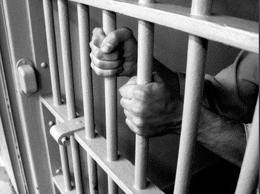Penal Code section 311.1(a) makes it a crime to possess child pornography. This section of the penal code allows discretion by the District Attorney to file it as a misdemeanor or a felony. As a misdemeanor, it is punishable by up to one year in jail and as a felony, it is punishable by up to three years in state prison.
Either way, it carries with it the requirement to register with the sexual offender date base also referred to as the “sexual offender” list. As such, the registrant is barred from living within certain distances of schools and parks and is placed with certain restrictions regarding cohabitation and association with minors (anyone under the age of 18).
Penal Code 311.2(b) makes it a straight felony punishable up to six years in state prison along with 290 registration for the crime of possession of child pornography. This section allows the District Attorney to file in essence the same charge with greater consequences based on the amount of images possessed, the criminal history of the defendant, the nature of the images possessed and the frequency of transactions involved in the sending and receiving of the images over the internet. As such, all child pornography charges are extremely serious and carry life-long consequences.
There are possible defenses to the accusation of possessing such material. The prosecution must prove that the images were, in fact, authentic images, not drawings or sketches but real pictures of real minors. They must be images of individuals under the age of 18. The images must be sexual in nature; a picture of your child taking a bath and sent via text message to your best friend will not constitute the crime of possession of child pornography. In addition, the defendant has to knowingly possess the images. This means that if multiple people have access to a certain computer or similar device, and the images are not attributable to a certain password or multiple individuals have access to the password, then it becomes difficult to prove that a certain person “possessed” the images for purposes of criminal knowledge and possession.
In some instances, the defendant’s address will be searched by law enforcement after obtaining a warrant based on a tip from an online informant. The search is done through the phone company or internet server which is traced to a home address associated with where the “ping” originated. Often times this will lead to a person’s residence. A search will ensue and computers will be seized. If there is more than one individual living at the residence, it can be difficult to prove who accessed the computer if there is no password or if more than one individual has access to the computer.
Sometimes there are numerous images that have been deleted and the images are retrieved through a forensic investigation by law enforcement. The images were present at one time but no longer accessible by the user. This raises the issue of possession and whether the defendant actually possessed child pornography. If the images are deleted in such a way that the user cannot access them without a special forensic tool and no such software to access the deleted photos is available on the computer to retrieve those images then they are deemed to be “unallocated” and as such, they are not possessed for purposes of the law. The courts are very clear that if there is no way of controlling, viewing, or sending the deleted images, short of some special investigative forensic tool or program, then the images are not usable nor are they “possessed”.
Often times, law enforcement does not comply with the time parameters set by the court that signs off on the search warrant. If the warrant is not started and completed within the mandated time frame set by the court then the appropriate remedy is to file a motion to suppress and if granted the case will be dismissed.
Another defense to a charge of child pornography arises when the investigating agency doesn’t comply with normal investigative procedures. Once the computer, laptop or smartphone is seized, the protocol must be complied with to assure an accurate investigation. If the computer is turned back on before the forensic examination begins, the whole process is compromised and any good expert for the defense will testify that the integrity of the investigation has been sullied and all images that are retrieved have the possibility of originating from a source other than the device seized from the defendant.
Always keep in mind that as in all criminal cases, when being contacted by law enforcement for possession of child pornography or for that matter any other criminal investigation it is always a wise choice to invoke the 5th amendment and not make any statements. “Officer, I would like to cooperate with you and I will give you my name and date of birth and address but beyond that, I am invoking my right to remain silent and not talk to you about any other facts pertaining to this case until I have had the opportunity to speak with my attorney.” This will ensure that you don’t make any incriminating statements and that nothing is said that could be misinterpreted or taken out of context. Always consult with an experienced criminal attorney before going to court. It can make the difference between jail or no jail.


